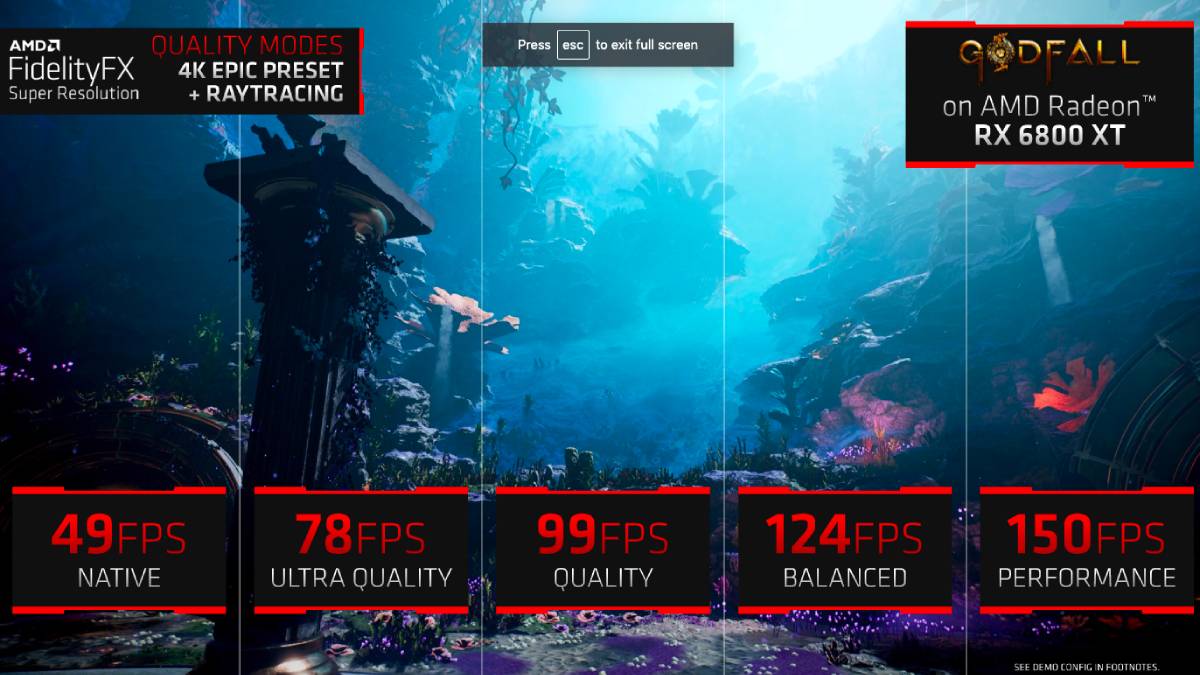AMD has made a number of major product announcements at the virtual Computex 2021 trade show. During her keynote, CEO Dr. Lisa Su unveiled new desktop Ryzen 5000 series APUs with integrated graphics, new discrete Radeon RX 6000M series mobile GPUs promising top-tier gaming performance, the AMD Advantage label for laptops promising optimised design and performance, and also the highly anticipated Fidelity FX Super Resolution graphics upscaling technology which is broadly compatible with GPUs from all manufacturers.
Starting with the new desktop APUs, the Ryzen 7 5700G and Ryzen 5 5600G will fill gaps in the market between existing Ryzen 5000 series CPUs, and should also help alleviate problems caused by the current shortage of discrete graphics cards which has led to enormous price spikes. Codenamed ‘Cezanne', the two new processor models will be available worldwide starting August 5.
The Ryzen 7 5700G is priced at $359 (approximately Rs. 26,815 before taxes) and has 8 CPU cores with multi-threading, running at up to 4.6GHz as well as 8 GPU compute units. The Ryzen 5 5600G on the other hand is priced at $259 (approximately Rs. 19,345) and has six cores with multithreading plus 7 GPU CUs. Both have 65W TDP ratings and will be sold with bundled coolers. They will work with all motherboards that support current Ryzen 5000 series CPUs. AMD promises that the integrated GPUs in its new desktop processors will be capable of 1080p gaming as well as handling content creation workloads.
AMD also announced six Cezanne-based Ryzen Pro CPUs for businesses; three with 65W TDPs and three with 35W TDPs intended for small-form-factor desktops, citing strong demand for compact commercial desktops with security and manageability features.
The new Radeon RX 6000M mobile GPU series is based on the RDNA2 architecture which supports DirectX ray tracing and Smart Access Memory (AMD's implementation of resizable BAR). They also promise substantial 1.5X performance improvements or up to 43 percent better power efficiency than the previous generation. The flagship Radeon RX 6800M is said to deliver over 120fps in today's popular games while running at 1440p at high settings, including Battlefield V, F1 2020, Overwatch, and Apex Legends. Going down the stack, the new Radeon RX 6700M and Radeon RX 6600M which promise over 100fps at 1440p and 1080p respectively.
The Radeon RX 6800M features 40 compute units and ray accelerators. It will have 12GB of GDDR6 RAM on a 192-bit interface plus a 96MB “Infinity cache”. According to AMD, it will be competitive with Nvidia's GeForce RTX 3080 and RTX 3070 in laptops. The Radeon RX 6700M has 36 CUs and ray accelerators, with 10GB of GDDR6 on a 160-bit bus and 80MB cache memory. The Radeon RX 6600M goes down to 28 CUs and ray accelerators, with 8GB of GDDR6 on a 128-bit bus and a 32MB cache.

Multiple design goals have been defined for AMD Advantage laptops
The nominal TDP ratings for the three GPUs are 145W, 135W and 100W respectively, but these can be tweaked by laptop OEMs depending on their chassis and cooling designs. In addition, the new Radeon RX 6000M series GPUs all support AMD's SmartShift power balancing tech when used with a Ryzen mobile CPU. AMD also says buyers can expect improved performance from power-constrained thin-and-light laptops, as well as when running on battery power. Laptops featuring these new GPUs will be announced by OEMs starting in June 2021.
To promote gaming laptops based on Ryzen CPUs and Radeon GPUs as well as their supporting software, AMD has introduced a new AMD Advantage Design Framework. The new initiative will see the company working closely with laptop OEMs to help optimise performance as well as fine-tune parameters such as operating temperatures, display quality, acoustics, connectivity, battery power, size, and weight. The first laptops developed under this initiative will be launched in June 2021, starting with a new Asus ROG Strix G15 and HP Omen 16.

FidelityFX Super Resolution will offer four levels of performance vs image quality
AMD also shared details of its upcoming FidelityFX Super Resolution upscaling framework, which will be rolling out later this year. It is set to take on Nvidia's DLSS (Deep Learning Supersampling) technology, which allows GeForce GPUs to compensate for the performance hit imposed by ray tracing by rendering at lower resolutions and then upscaling to a target resolution. AMD has stated that FidelityFX will be supported not only by a wide range of Radeon GPUs and Ryzen APUs, but also the competition, most notably Nvidia's GeForce series.
This broad compatibility, and the fact that it is open source, will tempt developers to support FidelityFX, according to AMD. Gamers will have four image quality options, so gamers will be able to choose their preferred balance of frame rate and quality. Performance is said to be up to 2.5X better than native resolution rendering in some titles. More details about FidelityFX Super Resolution, including a list of supported games, will be announced on June 22.
Closing out the keynote, Su previewed AMD's upcoming 3D chiplet manufacturing capabilities in the form of a prototype CPU based on the existing Ryzen 9 5900X CPU, but with an additional 3D vertical cache. A new 64MB 7nm SRAM chiplet layer is stacked directly on top of each core complex, tripling its L3 cache capacity in the same footprint with almost no visible difference. The cache is bonded directly to the underlying layer using copper-to-copper bonds with no solder, resulting in greater density and efficiency than other similar approaches to silicon stacking in the industry, according to AMD.
In a gaming demo, the 3D chiplet prototype achieved a 15 percent higher frame than a standard Ryzen 9 5900X CPU running at the same speed, which Su characterised as an entire architectural generation's worth of performance uplift. The 3D V-Cache is only the first implementation of 3D chiplets, and Su also announced that high-end products designed with 3D chiplets will go into production by the end of 2021.
[ad_2]
Source link

Post a Comment